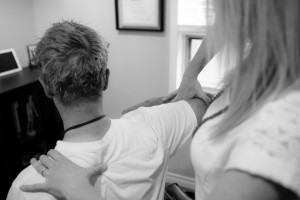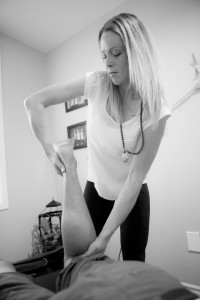
Kinetic Sports Therapy encourages patient learning and self care. You will be guided through the evaluation and treatment procedure, so you can take control of your recovery.
HOW WE HELP YOU
Your visit will consist of a combination of functional testing (NKT), Active Release Techniques (ART), Massage Therapy (RMT) and strength exercisies to help you:
Functional Evaluation Overview
Your visit will involve a functional assessment of the injury or area of concern, to identify cause and track progress. Each session is individualized to the patients unique needs, and include functional and sport-specific considerations to design a treatment plan that is patient specific.

What i s Active Release Techniques (ART)?
s Active Release Techniques (ART)?
ART is movement-based massage technique used to treat problems with muscles, tendons, ligaments, fascia and nerves. ART is most commonly used to treat conditions related to adhesions or scar tissue in overused muscles.
The goal of ART is to restore optimal texture, motion, and function of the soft tissue. Release any entrapped nerves or blood vessels, and reduce adhesions in muscle tissue.
How do overuse conditions occur?
Over-used muscles and soft tissue injuries can occur by:
Each of these factors can cause your body to produce tough, dense scar tissue in the affected area. This scar tissue binds up and ties down tissues that need to move freely. As scar tissue builds up, muscles become shorter and weaker, tension on tendons causes tendonitis, and nerves can become trapped. This can cause reduced range of motion, loss of strength, and pain. If a nerve is trapped you may also feel tingling, numbness, and weakness.
What is an ART treatment like?
The Practitioner will first determine what the injury is (tear, scar, adhesion or inflammation). The second step is to determine which muscle, ligament, tendon and/or nerve is affected. Specific motions of the body are then used to make layers of soft tissue slide over one another while contacting the injured area with a hand, finger or thumb. This breaks up the adhesions, allowing the different layers of muscle to slide over one another, or free up entrapped nerves. The treatment can be uncomfortable but is always done to the patients tolerance.
ART uses specific protocols to correct these problems. The skill of applications is highly dependent upon the practitioner’s knowledge of anatomy, biomechanics and most importantly touch.
An ART Therapist helps injured athletes return to full performance, after injury. Injury treatment varies according to the sport or activity involved. A qualified Sports Therapist advises on prevention of injuries and can examine, assess and treat those that do occur, as well as helping with the rehabilitation process.
Massage Therapy
Massage therapy is the manipulation of soft tissues of the body including muscles, connective tissues, tendons, ligaments and joints. Massage therapy is a clinically-oriented healthcare option that helps alleviate the discomfort associated with everyday and occupational stresses, muscular over-use and many chronic pain conditions.